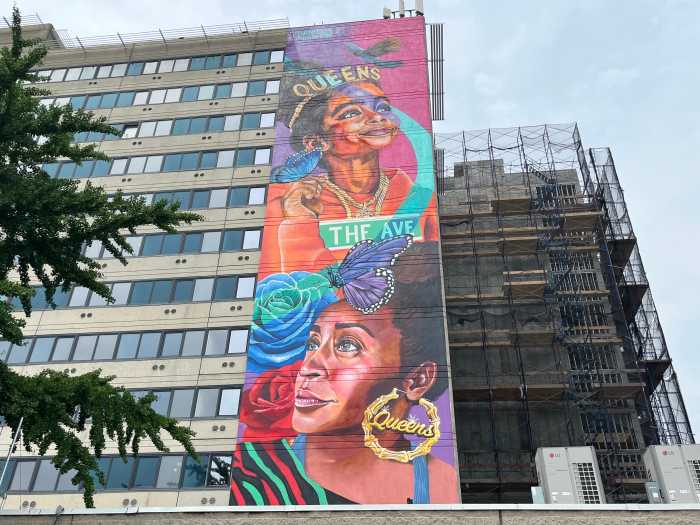By Julie Menin
As we are in the midst of very tough economic times, many parents have asked me what this means for the potential to build new schools. The answer is very clear. The best way for the city to recover is through infrastructure projects such as building new schools which not only serve to make sure that the next generation receives a proper education but also help to create new jobs and stabilize the economy. Just as President Franklin Delano Roosevelt created new public works and New Deal programs to help jumpstart the economy in the 1930’s, we must realize a “New Deal” for Downtown by advocating for important infrastructure projects such as the building of new schools.
In our quest to build new schools, what has alarmed many of us in the community is the rapid growth of the residential population of Lower Manhattan in recent years. Having our Lower Manhattan children attend classes that are not overcrowded and that have adequate art, computer and science classroom space is not a privilege, it is a right.
Community Board 1 recently completed a demographic study which demonstrated the extraordinary recent population growth in Lower Manhattan. The study shows that the district’s population is projected to grow from 34,420 in the 2000 census to 63,561 when currently planned developments conclude in 2013, an astonishing 85% increase. These numbers are based on analyses of residential developments that have been completed or are underway.
The projected population growth in some of our neighborhoods during this period is staggering. The Financial District is expected to grow at an extraordinary rate of 240% by 2013. Battery Park City will grow by 56%, and Tribeca by 45%. The lowest growth rate, 18%, is projected for the Seaport/Civic Center, historic areas with strong height restrictions in place at many sites.
In light of these figures, C.B. 1 is extremely concerned about existing and expected overcrowding in our schools. The Department of Education released figures in May that found overcrowding in three large C.B. 1 schools for the 2008-09 school year. The projected utilization for P.S. 234 was 150% with an over-enrollment of 248 students. An over-enrollment of 69 students and a utilization rate of 109% were found for P.S. 89 and I.S. 89, which share a common building.
C.B. 1 fought hard for the two new schools that will be opening in our neighborhood in 2010. When we initially suggested that the 2B site in Battery Park City, which was slated to be a Women’s Museum, should instead be a school, we faced considerable resistance. We can expect to encounter resistance once again as we scour the neighborhood for new schools but we must just redouble our efforts.
The Department of Education has just released its Proposed 2010-14 Capital Plan. The plan acknowledges the need for two new schools in District 2, which includes everything from Lower Manhattan to the Upper East Side, and the D.O.E. has indicated that one of these will be sited in an area which it terms “Village/Tribeca.” Unfortunately the document does not define or address the different needs of the many Lower Manhattan neighborhoods in this large area which includes most of Lower Manhattan and Greenwich Village.
The Capital Plan states that one of these planned new schools would have a total number of 738 seats and the other 118. However, we believe most of these new seats are needed in Lower Manhattan alone. A careful analysis done recently by Eric Greenleaf, a local parent, assessed all available statistics and concluded that there will be a need for a minimum of 804 additional seats to serve Lower Manhattan even after the Beekman School and P.S. 276 are in use. That is why I was extremely surprised to read D.O.E.’s analysis that they feel there is not a need for a school in the South Street Seaport area. With the population of the Financial District expected to grow so rapidly, this is precisely the area that needs a new school. Also for parents on the east side of our district it has been frustrating at best to see a disproportionate amount of schools built on the west side, particularly with the new population growth on the east side.
We will meet with D.O.E. representatives in the coming weeks to clarify the new capital plan and to once again strenuously argue for Lower Manhattan’s needs.
In the meantime, Community Board 1 continues to look for new sites to house needed schools. Possible sites could include the American Stock Exchange building on the market and the proposed Greenwich Street South redevelopment plan The Greenwich South site in particular presents a unique opportunity to lobby for both a school and affordable housing.
In addition to securing sites to meet the long-term needs, we must not neglect the urgent need for interim seats to serve as incubator space for kindergarten students who will move into the two new Downtown schools when they open. We recently got very welcome news when the D.O.E. announced that it would provide six classrooms in the Tweed Courthouse on Chambers St. to meet this need. Together with the two classrooms in the new Downtown Community Center that have been generously offered by Manhattan Youth, these should meet the pressing need for interim school space.
Lower Manhattan is fortunate to have an extremely dedicated and talented group of parents who have worked with me and our local elected officials on State Assembly Speaker Sheldon Silver’s School Overcrowding Task Force. Together we have accomplished a great deal in recent years and we will redouble these efforts until we have ensured that adequate facilities exist to educate all of the children in Lower Manhattan. Let’s work together to make sure Lower Manhattan achieves our “New Deal.”
Julie Menin is chairperson of Community Board 1.



























